Introduction
In today’s world, the fashion industry plays a significant role in shaping our culture and defining our personal style. However, it’s essential to consider the environmental and ethical impact of our fashion choices. Sustainable fashion, also known as eco-fashion or ethical fashion, is a growing movement that focuses on creating clothing that is both environmentally friendly and socially responsible.
The Significance of Sustainable Fashion
Sustainable fashion goes beyond just the aesthetics of clothing. It encompasses the entire lifecycle of a garment, from the sourcing of materials to the manufacturing process, distribution, consumption, and eventual disposal. By choosing ethical and eco-friendly clothing, we can make a positive difference in several ways.
Importance of Choosing Ethical and Eco-Friendly Clothing
- Environmental Impact: The fashion industry is known for its significant environmental footprint, including water pollution, greenhouse gas emissions, and waste generation. By opting for sustainable fashion, we can reduce the industry’s harmful impact on the planet and preserve precious natural resources.
- Fair and Safe Working Conditions: Many conventional fashion brands rely on cheap labor and exploit workers in developing countries. Choosing ethical clothing means supporting companies that prioritize fair wages, safe working conditions, and workers’ rights. It allows us to contribute to a more equitable and socially responsible fashion industry.
- Reducing Waste and Landfill Overflow: Fast fashion, characterized by the rapid turnover of inexpensive clothing, contributes to a throwaway culture. By investing in well-made, durable garments and embracing circular fashion practices like upcycling and clothing swaps, we can reduce waste and minimize the amount of clothing that ends up in landfills.
- Supporting Innovation and Positive Change: Sustainable fashion encourages creativity, innovation, and the development of alternative production methods and materials. By choosing eco-friendly clothing, we support brands and designers who are pioneering sustainable practices and pushing for positive change within the fashion industry.
- Personal Style and Authenticity: Sustainable fashion allows us to express our personal style in a unique and authentic way. By curating a wardrobe of timeless, high-quality pieces, we can embrace a more conscious approach to fashion and move away from the fleeting trends of fast fashion.
In the following sections of this blog post, we will explore the various aspects of sustainable fashion and provide practical tips for choosing ethical and eco-friendly clothing. By making informed choices and supporting brands that align with our values, we can make a significant impact and contribute to a more sustainable and socially responsible fashion industry.
In conclusion, sustainable fashion offers a transformative approach to the way we perceive and consume clothing. By choosing ethical and eco-friendly clothing, we become active participants in creating a more sustainable and socially responsible fashion industry. Through our choices, we can protect the environment, support fair working conditions, reduce waste, and promote innovation and positive change. Let us embrace the power we have as consumers to make a difference and advocate for a fashion industry that values people, the planet, and our personal style.
Understanding the Impact of Fast Fashion
The rise of fast fashion in recent years has revolutionized the way we consume clothing. Fast fashion refers to the quick production and turnover of inexpensive clothing, driven by rapidly changing trends and the desire for constant novelty. While it may seem appealing to have access to affordable and trendy clothing, the impact of fast fashion on the environment and society is significant and alarming.

Environmental Consequences of Fast Fashion
Fast fashion has a profound environmental footprint that stems from various stages of the garment’s life cycle.
- Resource Depletion: The production of fast fashion relies heavily on the extraction of finite resources such as water, fossil fuels, and raw materials like cotton and polyester. This extraction contributes to environmental degradation and depletes valuable resources.
- Pollution: The fashion industry is one of the largest contributors to water pollution. Textile dyeing and treatment processes release toxic chemicals into waterways, contaminating ecosystems and harming aquatic life. Additionally, the use of synthetic fibers like polyester releases microplastics into the environment during washing, further polluting our oceans and water sources.
- Greenhouse Gas Emissions: The carbon footprint of fast fashion is substantial. From manufacturing to transportation, each step of the supply chain emits greenhouse gases that contribute to climate change. The production of synthetic fibers, in particular, is energy-intensive and releases significant amounts of carbon dioxide into the atmosphere.
- Waste Generation: Fast fashion encourages a throwaway culture, where garments are worn only a few times before being discarded. This results in a massive amount of textile waste that ends up in landfills, as natural fibers can take years to decompose. The textile industry is one of the largest contributors to global waste generation.
Social Consequences of Fast Fashion
The negative impact of fast fashion extends beyond the environment. The industry’s relentless pursuit of low production costs and high profits often comes at the expense of workers’ rights and well-being.
- Exploitative Labor Practices: Fast fashion brands frequently outsource production to countries with lower labor costs, where workers are subjected to long hours, low wages, and unsafe working conditions. These workers, predominantly women, often face exploitation and lack access to fair wages, healthcare, and social protection.
- Human Rights Violations: Cases of human rights violations, including forced labor and child labor, have been documented in the fashion supply chain. The pressure to meet fast production deadlines and cost targets often leads to the violation of basic human rights.
- Inequality and Unfair Trade: The fast fashion industry perpetuates global economic inequalities. Garment workers in developing countries receive a fraction of the final retail price, while brands and retailers reap significant profits. This unjust distribution of wealth further widens the gap between the rich and the poor.
The Need for Sustainable Alternatives
Given the detrimental impact of fast fashion, there is an urgent need for sustainable alternatives in the fashion industry. Sustainable fashion encompasses practices that prioritize environmental responsibility, social justice, and ethical production methods. By choosing ethical and eco-friendly clothing, we can help drive positive change and mitigate the harmful effects of fast fashion.
The fast fashion industry’s environmental and social consequences cannot be ignored. Understanding the impact of fast fashion is crucial for making informed choices as consumers. By recognizing the need for sustainable alternatives, we can begin to shift our fashion choices towards ethical and eco-friendly clothing. In the next section, we will delve deeper into the benefits of embracing sustainable fashion and explore ways to choose clothing that aligns with our values.
Ethical Fashion: Making a Difference
In the world of sustainable fashion, ethical practices play a vital role in transforming the industry and promoting positive change. Ethical fashion goes beyond environmental considerations and encompasses the social and human rights aspects of clothing production. By understanding the concept of ethical fashion and supporting brands with ethical practices, we can make a significant difference in the fashion landscape.
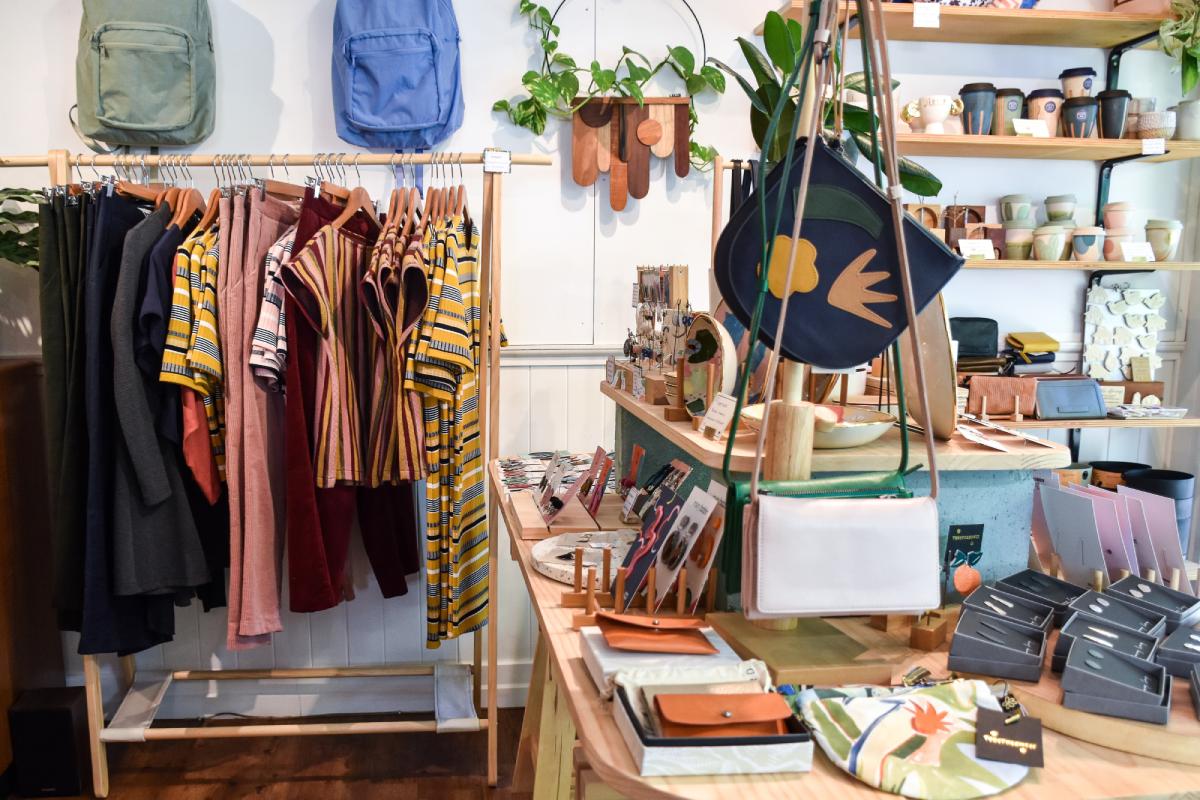
Exploring the Concept of Ethical Fashion
Ethical fashion involves a set of principles and values that prioritize the well-being of people and the planet throughout the entire supply chain. It focuses on transparency, accountability, and fairness in all aspects of clothing production. Key principles of ethical fashion include:
- Fair Trade: Fair trade principles ensure that workers involved in the production process receive fair wages and operate in safe working conditions. It aims to create a more equitable and sustainable global trade system.
- Workers’ Rights: Ethical fashion advocates for the protection of workers’ rights, including the right to fair pay, reasonable working hours, and the absence of exploitation. It promotes empowerment and supports initiatives that improve labor conditions.
- Safe Working Conditions: Ethical fashion prioritizes the safety and well-being of workers, advocating for the elimination of hazardous practices and the provision of safe working environments. This includes promoting occupational health and safety measures to protect workers’ physical and mental health.
Fair Trade, Workers’ Rights, and Safe Working Conditions
One of the pillars of ethical fashion is the concept of fair trade. Fair trade certification ensures that producers receive fair compensation for their work and have access to better working conditions. By supporting fair trade, we can contribute to creating a more just and equitable fashion industry. Additionally, ethical fashion places a strong emphasis on workers’ rights, aiming to eliminate exploitation and improve the lives of those involved in the production process. This includes empowering workers, supporting their right to unionize, and advocating for fair wages and reasonable working hours. Furthermore, ethical fashion promotes safe working conditions by encouraging brands to comply with health and safety standards, providing a safe and healthy environment for workers to thrive.
Supporting Brands with Ethical Practices
Choosing to support brands with ethical practices is a powerful way to drive positive change in the fashion industry. By consciously selecting brands that prioritize fair trade, workers’ rights, and safe working conditions, we send a message that we value ethical considerations in fashion. Look for brands that are transparent about their supply chain and production processes. Seek out certifications such as Fair Trade, Global Organic Textile Standard (GOTS), and Fair Wear Foundation to ensure that your clothing is ethically produced. Supporting ethical brands not only promotes sustainable and responsible practices but also encourages other companies to follow suit.
In conclusion, ethical fashion goes hand in hand with sustainable fashion. By embracing ethical practices, we can make a significant impact on the lives of garment workers and the environment. When we support brands that prioritize fair trade, workers’ rights, and safe working conditions, we contribute to a fashion industry that values people and the planet. Let’s be conscious consumers and choose ethical and eco-friendly clothing that reflects our values and creates a positive ripple effect within the fashion world.
Eco-Friendly Materials and Production Processes
When it comes to sustainable fashion, the choice of materials and production processes is crucial. By opting for eco-friendly materials and supporting sustainable manufacturing techniques, we can significantly reduce the environmental impact of our clothing. Let’s explore some of the key eco-friendly materials and production processes that are revolutionizing the fashion industry.
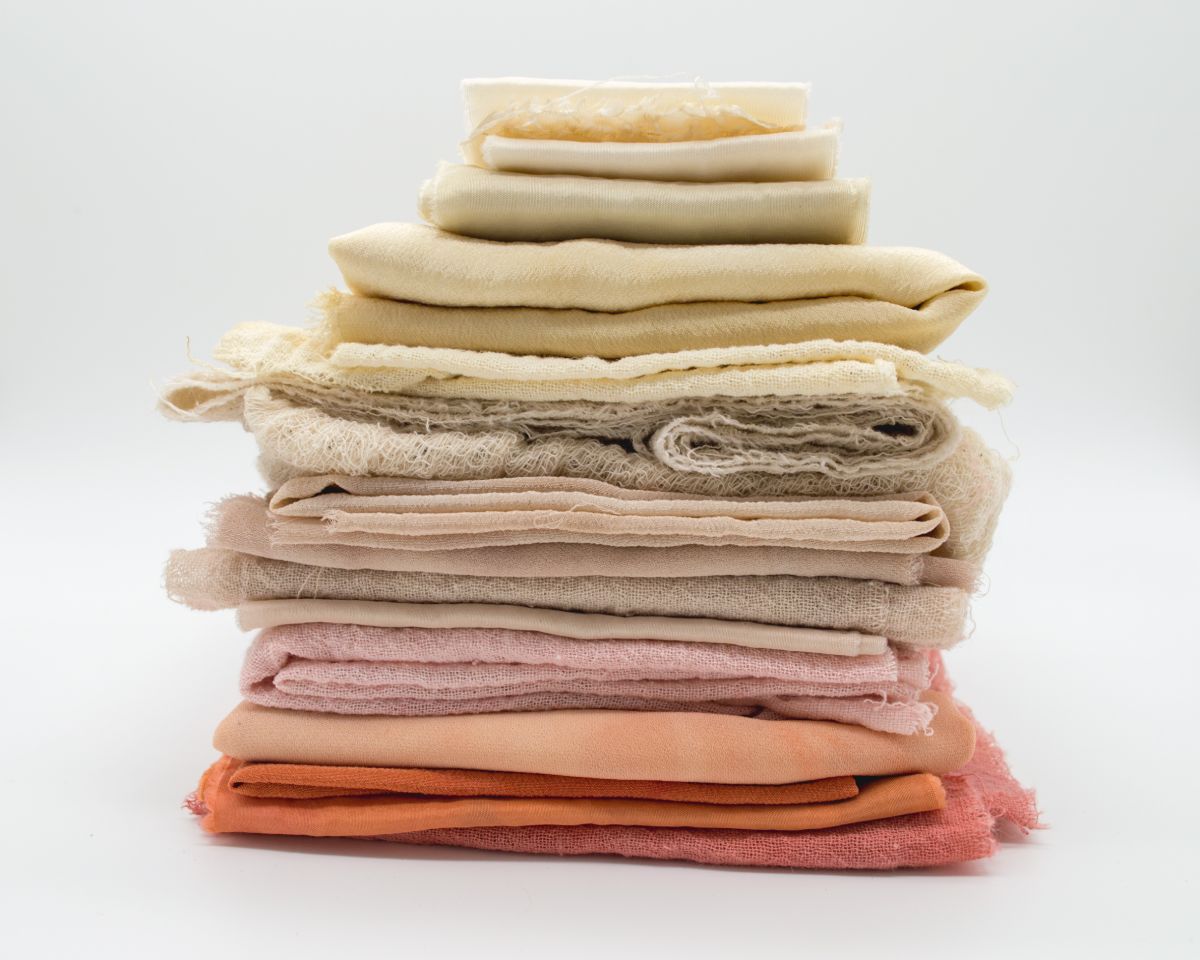
Introducing Eco-Friendly Materials
- Organic Cotton: Organic cotton is grown without the use of synthetic pesticides, fertilizers, or genetically modified organisms (GMOs). It promotes healthier soil, reduces water consumption, and protects the health of farmers and workers. Choosing clothing made from organic cotton helps support a more sustainable and responsible agricultural system.
- Hemp: Hemp is a versatile and sustainable fiber that requires minimal water and no pesticides to grow. It is known for its durability and breathability, making it an excellent choice for clothing. Hemp also has a low environmental impact, as it can be cultivated in diverse climates and enriches the soil it grows in.
- Recycled Fabrics: Recycling materials like plastic bottles, fishing nets, and textile waste to create new fabrics reduces the demand for virgin resources. Recycled fabrics, such as recycled polyester or nylon, help minimize waste and energy consumption. They also prevent these materials from ending up in landfills or polluting our oceans.
Sustainable Manufacturing Techniques and Processes
- Low-Impact Dyes: Traditional dyeing processes often involve the use of harmful chemicals that pollute waterways. Sustainable brands prioritize the use of low-impact or natural dyes that are free from toxic substances and have a minimal environmental footprint.
- Water Conservation: Sustainable manufacturing processes aim to reduce water consumption throughout the production cycle. Techniques such as waterless dyeing, recycling water, and implementing efficient washing and rinsing practices help minimize water usage in garment manufacturing.
- Energy Efficiency: Sustainable fashion brands strive to reduce energy consumption by utilizing renewable energy sources, optimizing machinery efficiency, and implementing energy-saving measures in their production facilities.
Benefits of Choosing Clothing Made from Sustainable Materials
Opting for clothing made from sustainable materials offers numerous benefits:
- Reduced Environmental Impact: Eco-friendly materials require fewer resources and have a lower carbon footprint compared to conventional fabrics. By choosing sustainable materials, we contribute to the conservation of natural resources and the reduction of pollution.
- Improved Worker Safety and Health: Sustainable materials are often produced using safer manufacturing processes, protecting the health and well-being of workers. By supporting sustainable fashion, we promote better working conditions for garment workers worldwide.
- Support for Innovation: Embracing sustainable materials and production processes encourages research and innovation in the fashion industry. It paves the way for the development of new, eco-friendly technologies and practices that can transform the entire supply chain.
By choosing clothing made from eco-friendly materials and supporting brands that prioritize sustainable manufacturing, we can make a positive impact on the fashion industry. Each purchase we make reflects our commitment to a more ethical and eco-conscious future. Together, let’s promote the use of sustainable materials and advocate for responsible production processes in the world of fashion.
Choosing Sustainable Brands and Certifications
In the quest for sustainable fashion, it is essential to research and identify brands that prioritize ethical and eco-friendly practices. By supporting these brands and looking for relevant certifications and labels, we can make informed choices that align with our values. Let’s explore the process of choosing sustainable brands and the significance of certifications and supply chain transparency.

Researching and Identifying Sustainable Fashion Brands
When embarking on a sustainable fashion journey, researching and identifying brands that align with your values is a crucial first step. Here are some tips to guide you:
- Look for Transparency: Sustainable brands are committed to transparency, openly sharing information about their supply chains, production processes, and the materials they use. Visit their websites or reach out to them directly to learn about their sustainability initiatives.
- Consider Ethical Practices: Ethical fashion brands prioritize fair trade, ensuring that workers involved in the production process receive fair wages, work in safe conditions, and are treated with dignity. Look for brands that have certifications or memberships in ethical trade organizations.
- Evaluate Environmental Commitments: Sustainable brands take measures to minimize their environmental impact. They may use renewable energy sources, implement recycling programs, or have initiatives in place to reduce waste and water consumption. Look for information on their commitment to sustainability and environmental stewardship.
Exploring Certifications and Labels
Certifications and labels play a crucial role in verifying the ethical and eco-friendly practices of fashion brands. Here are some prominent certifications to look for:
- Global Organic Textile Standard (GOTS): GOTS certification ensures that textiles are produced organically and meet strict environmental and social criteria. It guarantees the use of organic fibers, bans the use of harmful chemicals, and ensures fair labor practices throughout the supply chain.
- Fair Trade Certification: Fair Trade certification ensures that producers in developing countries receive fair prices and work in safe conditions. It promotes sustainable livelihoods for farmers and artisans and supports community development.
- Bluesign® Certification: Bluesign® certification focuses on the environmental impact of the textile industry. It sets standards for resource productivity, consumer safety, and air and water emissions. Brands with this certification prioritize sustainable materials and responsible manufacturing processes.
The Role of Transparency and Supply Chain Traceability
Transparency and supply chain traceability are vital aspects of sustainable fashion. Brands that are transparent about their supply chains and production processes allow consumers to make informed choices. Here’s why transparency matters:
- Accountability: Transparent brands are accountable for their actions and can be held responsible for any unethical practices. By sharing information about their supply chains, they demonstrate a commitment to responsible sourcing.
- Visibility: Supply chain transparency allows consumers to understand the journey of their garments, from raw materials to the finished product. It helps identify potential environmental and social impacts along the way.
- Encouraging Change: By demanding transparency, consumers can push brands to improve their practices. Increased awareness and scrutiny can drive positive change throughout the fashion industry.
By supporting sustainable brands and looking for relevant certifications and labels, we can contribute to a more ethical and eco-friendly fashion industry. Let’s make conscious choices that reflect our values and create a demand for responsible fashion practices.
Extending the Lifespan of Clothing
To truly embrace sustainable fashion, it’s crucial not only to make conscious choices while shopping but also to extend the lifespan of our clothing. By adopting proper care and maintenance practices, exploring creative ways to repurpose garments, and embracing alternative shopping options, we can significantly reduce our fashion footprint. Let’s delve into some tips and strategies for extending the lifespan of our clothing.
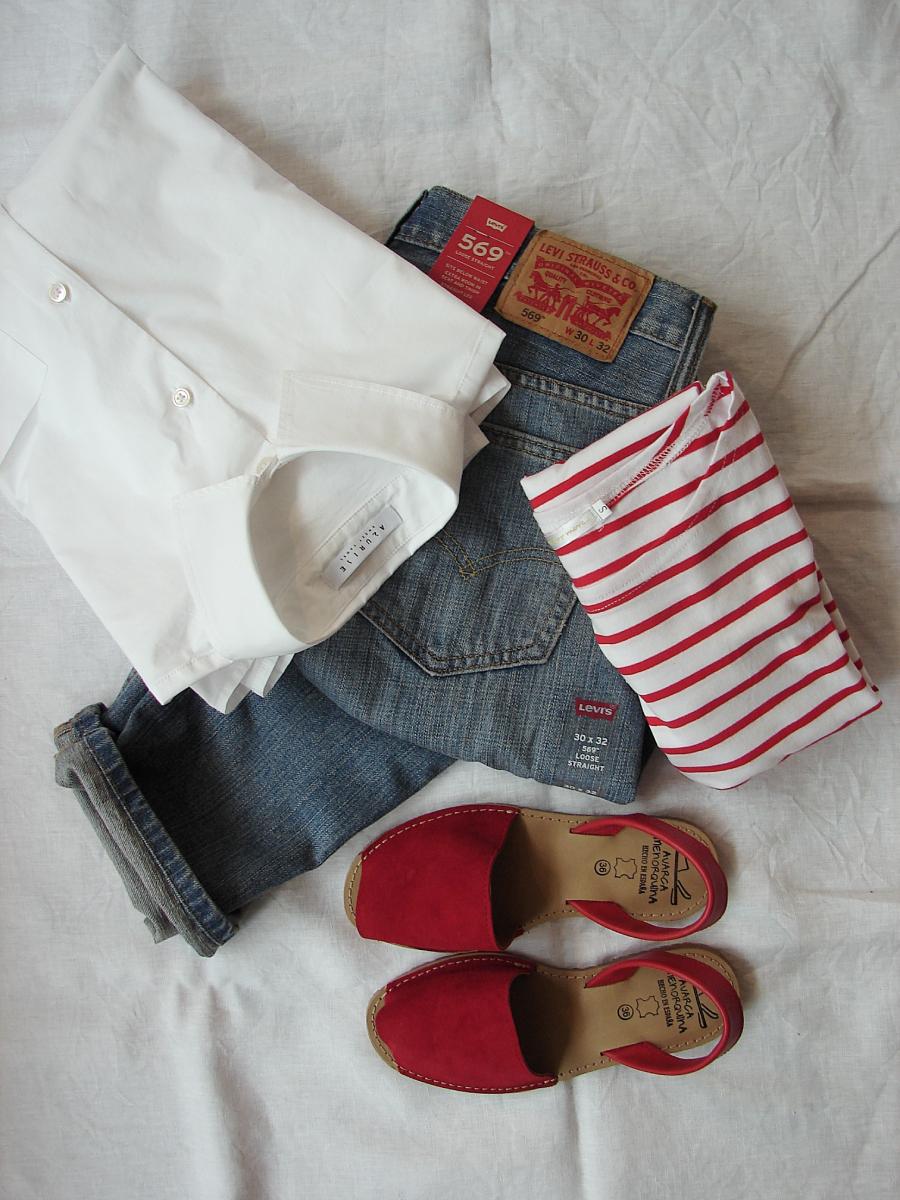
Tips for Proper Clothing Care and Maintenance
Proper care and maintenance are essential for preserving the quality and longevity of our clothing. Here are some tips to ensure that your garments last longer:
- Follow Care Instructions: Always read and follow the care instructions on the clothing labels. Different fabrics require specific care methods, such as handwashing, machine washing, or dry cleaning. Following these instructions will help prevent damage and maintain the garment’s integrity.
- Wash with Care: Opt for gentle washing cycles and use environmentally friendly detergents. Washing clothes in cold water not only saves energy but also helps retain the colors and fabric quality. Additionally, consider air-drying your clothes instead of using a dryer whenever possible.
- Repair and Mend: Instead of discarding clothes at the first sign of damage, embrace the art of repairing and mending. Learn basic sewing skills or seek the help of local tailors to fix loose buttons, small tears, or loose hems. Repairing garments not only extends their lifespan but also adds a unique touch of character.
Exploring Upcycling, Repairing, and Repurposing Clothing
Upcycling, repairing, and repurposing clothing offer creative ways to breathe new life into old garments. Consider the following ideas:
- Upcycling: Transform old clothes into new and unique pieces by repurposing them. For example, turn a worn-out denim jacket into a trendy tote bag or transform old t-shirts into reusable produce bags. Upcycling allows you to unleash your creativity while reducing textile waste.
- Repair and Alterations: If you have clothes that no longer fit or need repairs, consider altering them to suit your current style or body shape. Shorten a dress, take in the waist of a pair of pants, or convert a long-sleeved shirt into a trendy sleeveless top. With a little creativity, you can give old clothes a fresh and personalized look.
The Benefits of Swapping, Renting, and Second-Hand Shopping
Exploring alternative shopping options is a fantastic way to reduce our environmental impact and support sustainable fashion. Consider the following options:
- Clothing Swaps: Organize or participate in clothing swap events with friends, family, or local communities. Swapping allows you to exchange clothes you no longer wear for items that are new to you, giving your wardrobe a refreshing update without spending money or contributing to waste.
- Renting: Renting clothes for special occasions or everyday wear is gaining popularity. Renting platforms offer a wide range of options, allowing you to enjoy trendy outfits without the need for constant purchasing. Renting reduces the demand for new clothing production and encourages a more circular fashion economy.
- Second-Hand Shopping: Explore thrift stores, consignment shops, and online platforms for second-hand clothing. You can find unique, high-quality pieces at affordable prices while giving pre-loved garments a new home. Second-hand shopping supports circularity in the fashion industry and reduces the demand for new clothing production.
By adopting these practices and embracing a mindset of conscious consumption, we can extend the lifespan of our clothing and contribute to a more sustainable fashion industry. Let’s cherish our garments, get creative with repurposing, and explore alternative shopping options to make a positive impact.
Supporting Local and Independent Designers
Supporting local and independent fashion designers is a powerful way to embrace sustainable fashion and make a positive impact on the industry. By choosing to invest in their creations, we contribute to the growth of ethical and eco-friendly practices while celebrating the uniqueness and craftsmanship that sustainable fashion offers.

Exploring the Advantages of Supporting Local and Independent Fashion Designers
When we support local and independent fashion designers, we unlock a myriad of advantages that extend beyond sustainable practices. Consider the following benefits:
- Unique and Artistic Creations: Local designers often bring a fresh perspective to fashion, infusing their creations with unique aesthetics and artistic expressions. By embracing their designs, you can discover one-of-a-kind pieces that truly reflect your personal style.
- Craftsmanship and Quality: Independent designers typically prioritize quality over quantity. They invest time and effort into perfecting their craft, paying attention to details and using high-quality materials. By supporting them, you can enjoy garments that are well-made, durable, and designed to last.
Discussing the Uniqueness and Craftsmanship of Sustainable Fashion
Sustainable fashion goes hand in hand with creativity and craftsmanship. When we choose garments from local and independent designers committed to ethical practices, we contribute to the preservation of these essential elements of fashion. Here’s why it matters:
- Artisanal Techniques: Many independent designers employ traditional and artisanal techniques in their production processes. These techniques honor cultural heritage, support local craftsmanship, and add a touch of uniqueness to the garments. By wearing these creations, you become a patron of heritage and traditions.
- Thoughtful Design Process: Independent designers have the freedom to explore innovative and sustainable design solutions. They consider the entire lifecycle of their products, from sourcing materials to manufacturing and packaging. This holistic approach ensures that their creations minimize environmental impact while remaining stylish and fashion-forward.
Highlighting Local Fashion Events and Markets
Attending local fashion events and markets is a fantastic way to connect with independent designers, discover emerging talent, and support the sustainable fashion community. Here’s why you should explore these opportunities:
- Community Engagement: Local fashion events and markets provide a platform for designers to showcase their work directly to the community. By attending these events, you can engage with designers, learn about their design philosophies, and develop a deeper appreciation for their creations.
- Unique Finds: These events often feature a curated selection of sustainable and ethically-made clothing, accessories, and jewelry. By exploring these offerings, you have the chance to find hidden gems and support designers who align with your values.
By supporting local and independent fashion designers, we contribute to the growth of a more sustainable fashion industry. Let’s celebrate their unique creations, honor craftsmanship, and embrace the opportunities to engage with our local fashion communities.
Conscious Consumerism: Making Informed Choices
In the quest for sustainable fashion, conscious consumerism plays a crucial role. By embracing mindfulness and intentionality in our fashion purchases, we can make informed choices that align with our values, promote ethical practices, and reduce our environmental footprint. Let’s explore the key aspects of conscious consumerism in sustainable fashion.
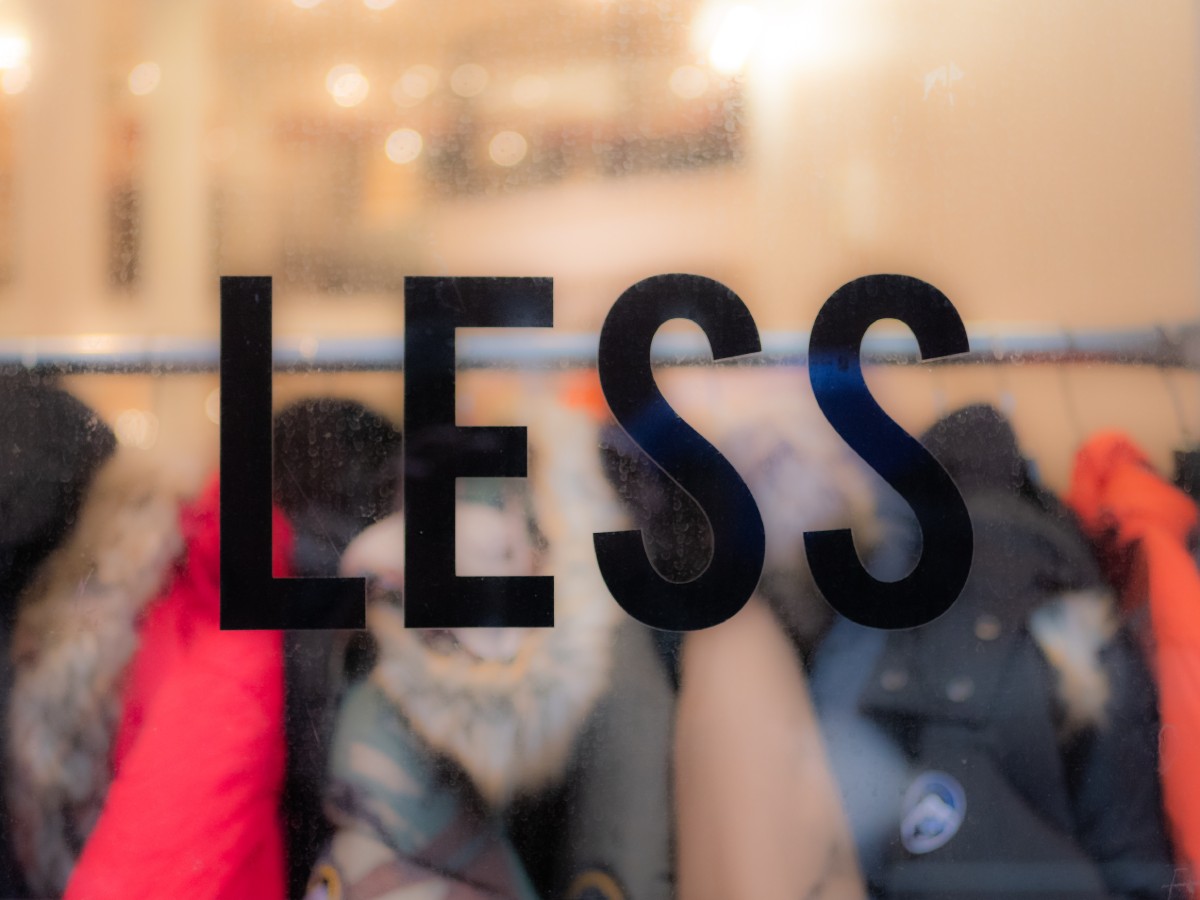
Encouraging Mindfulness and Intentionality in Fashion Purchases
Mindfulness is at the core of conscious consumerism. By practicing mindfulness in our fashion purchases, we become more aware of the impact our choices have on the environment, workers’ rights, and the overall fashion industry. Consider the following aspects:
- Ethics and Transparency: Before making a purchase, take the time to research and understand a brand’s ethical practices. Look for transparency regarding their supply chain, labor conditions, and commitment to environmental sustainability. Support brands that align with your values and demonstrate a genuine commitment to positive change.
- Quality and Durability: Opt for garments that are well-made and designed to withstand the test of time. Prioritize quality over quantity and invest in pieces that can be worn repeatedly without losing their appeal. By choosing durable clothing, you contribute to reducing waste and embracing a more sustainable approach to fashion.
Discussing the Importance of Personal Style and Investment Pieces
Sustainable fashion is not just about following trends or buying what’s deemed “eco-friendly.” It’s an opportunity to express your personal style while making conscious choices. Consider the following factors when curating your wardrobe:
- Defining Your Personal Style: Embrace your unique style and preferences. Building a sustainable wardrobe is about investing in pieces that truly resonate with you, rather than succumbing to fast fashion’s fleeting trends. By choosing clothing that reflects your personality, you ensure that it will be cherished and worn for years to come.
- Investment Pieces: Consider investing in timeless, versatile pieces that can be mixed and matched effortlessly. These investment pieces form the foundation of a sustainable wardrobe and can be styled in various ways for different occasions. By focusing on quality, versatility, and longevity, you reduce the need for excessive consumption and contribute to a more sustainable fashion ecosystem.
Highlighting the Role of Minimalism and Capsule Wardrobes
Minimalism and capsule wardrobes offer practical solutions for conscious consumers who seek to simplify their lives and reduce their environmental impact. Here’s how these concepts contribute to sustainable fashion:
- Minimalism: Embrace the philosophy of “less is more” by decluttering your wardrobe and focusing on essential items. By curating a minimalist wardrobe, you eliminate the temptation of impulse purchases and foster a more intentional and sustainable approach to fashion.
- Capsule Wardrobes: A capsule wardrobe consists of a curated collection of versatile, high-quality pieces that can be mixed and matched to create various outfits. By streamlining your wardrobe to essential items, you promote a more sustainable and mindful consumption pattern. Additionally, a capsule wardrobe encourages creativity in styling and reduces the need for frequent shopping.
Conscious consumerism empowers us to make choices that align with our values and contribute to a more sustainable fashion industry. By practicing mindfulness, embracing personal style, and exploring minimalism and capsule wardrobes, we can create a wardrobe that reflects our values while minimizing our impact on the planet.
Spreading Awareness and Advocacy
In the journey towards a more sustainable fashion industry, spreading awareness and advocating for change play crucial roles. As consumers, we have the power to drive transformation by making conscious choices and actively promoting sustainable fashion practices.

The Power of Consumer Activism
Consumer activism refers to the collective efforts of individuals who use their purchasing decisions to influence companies and industries towards more sustainable and ethical practices. By supporting brands that align with our values and boycotting those that don’t, we send a strong message that sustainability and ethics matter.
Engaging in consumer activism goes beyond individual actions. It involves researching and sharing information about sustainable fashion, engaging in discussions, and demanding transparency from brands. By voicing our concerns and expectations, we contribute to shaping a more sustainable future for the fashion industry.
Educating Others and Promoting Sustainable Fashion
Spreading awareness is an essential part of the sustainable fashion movement. By educating others about the environmental and social impact of fast fashion, we can inspire them to make more conscious choices. Start conversations with friends, family, and colleagues, and share information through social media platforms, blogs, or local events.
Encourage others to consider the impact of their clothing purchases, and provide them with resources to learn more about sustainable fashion options. Highlight the benefits of choosing ethical and eco-friendly clothing, such as reduced environmental footprint, support for fair labor practices, and the preservation of natural resources.
Supporting Initiatives and Organizations
There are numerous initiatives and organizations dedicated to promoting sustainable fashion practices. By supporting and getting involved with these initiatives, we can contribute to a collective effort for change.
Look for local or international organizations working towards sustainable fashion goals and consider supporting them through donations, volunteering, or participating in their campaigns. These organizations work to create awareness, develop sustainable fashion standards, and push for policy changes in the industry.
Additionally, keep an eye out for fashion events, workshops, and exhibitions that focus on sustainable fashion. Attend or participate in these events to connect with like-minded individuals, learn from experts, and discover new sustainable fashion brands.
Remember, change happens when individuals come together to create a collective impact. By spreading awareness, advocating for sustainable fashion, and supporting initiatives and organizations, we can contribute to transforming the fashion industry into a more ethical and eco-friendly one.
Conclusion
As we reach the end of our journey exploring sustainable fashion and the importance of choosing ethical and eco-friendly clothing, let’s take a moment to recap the key points and inspire readers to make conscious fashion choices for a more sustainable future.
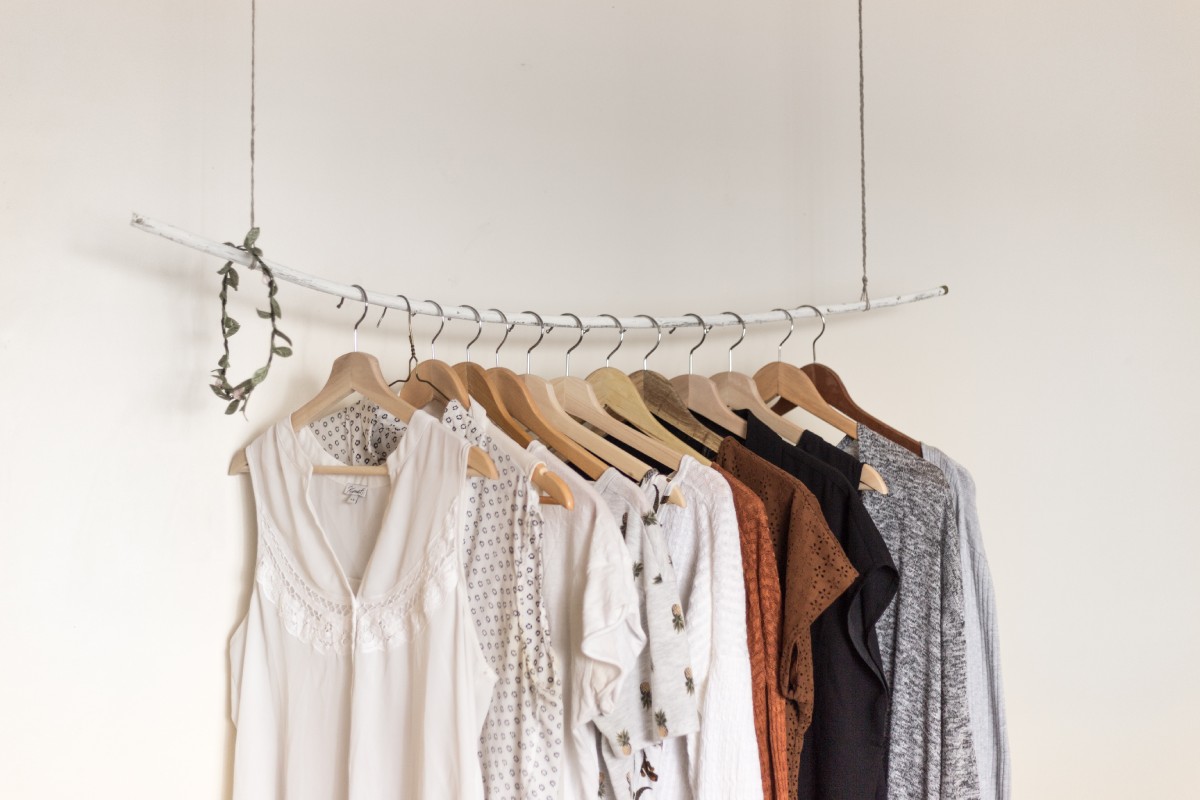
The Importance of Choosing Ethical and Eco-Friendly Clothing
Choosing ethical and eco-friendly clothing goes beyond personal style and fashion trends. It is a conscious decision that has a profound impact on the environment, society, and future generations. By opting for sustainable fashion, we contribute to:
Preserving the Environment
Ethical and eco-friendly clothing reduces the strain on natural resources and minimizes pollution. It helps to conserve water, limit greenhouse gas emissions, and protect ecosystems from harmful chemicals. By embracing sustainable materials and production processes, we can mitigate the environmental impact of the fashion industry.
Supporting Fair Labor Practices
Ethical fashion prioritizes the rights and well-being of workers throughout the supply chain. By choosing brands that provide fair wages, safe working conditions, and respect human rights, we empower individuals and communities. Supporting ethical fashion means standing against exploitative labor practices and promoting social justice.
We have the power to drive change through our fashion choices. By making conscious decisions, we become catalysts for a more sustainable future. Here are some ways to inspire and motivate readers to take action:
Educate Yourself
Continuously educate yourself about sustainable fashion practices, materials, and certifications. Stay informed about the impact of fast fashion and the alternatives available. Knowledge empowers us to make informed decisions and advocate for change.
Prioritize Quality and Timelessness
Instead of succumbing to fast fashion’s cycle of constant consumption, focus on quality and timelessness. Invest in well-made, durable pieces that will stand the test of time. Embrace a minimalist approach and build a versatile capsule wardrobe that reflects your personal style.
Embrace Second-Hand and Vintage Shopping
Consider second-hand and vintage shopping as a sustainable alternative to purchasing new clothing. Thrift stores, online platforms, and consignment shops offer unique and affordable options while reducing the demand for new production. Embracing pre-loved fashion extends the life cycle of clothing and reduces waste.
Support Ethical and Sustainable Brands
Research and support brands that align with your values. Look for certifications and labels that guarantee ethical and eco-friendly practices. Support local and independent designers who prioritize sustainability and craftsmanship. By voting with your wallet, you encourage the growth of a more sustainable fashion industry.
Together Towards a Sustainable Future
In conclusion, the choices we make as consumers have a significant impact on the fashion industry and the world around us. By choosing ethical and eco-friendly clothing, we contribute to the preservation of the environment, the improvement of working conditions, and the promotion of a more equitable society.
Let’s inspire and support each other on this journey towards sustainable fashion. By making conscious fashion choices, advocating for change, and supporting ethical brands, we can create a positive impact and shape a future where fashion is both beautiful and sustainable.

